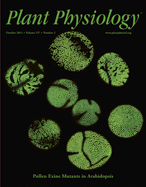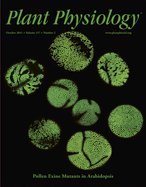
Cover image

On the Cover: Exine, the outer plant pollen wall, has elaborate species-specific patterns, provides a protective barrier for male gametophytes, and serves as a mediator of strong and speciesspecific pollen-stigma adhesion. Although several genes important for exine development have been identified in recent years, there is still very limited understanding of how exine is developed and its complex patterns are laid out. The systematic identification of the genetic network required for biosynthesis, transport, and assembly of exine components has been largely lacking because of the very limited number of previous genetic screens and the technical challenges associated with these screens. In this issue, Dobritsa et al. (947–970) describe a simple yet effective strategy for screening for exine mutants and present results of a large-scale genetic screen. As a result, multiple mutants exhibiting a large variety of abnormal exine phenotypes were isolated. In this image, two wild-type Arabidopsis (Arabidopsis thaliana) pollen grains that have a regular reticulate exine pattern and three equally spaced apertures are shown in the middle. These two grains are surrounded by the mutants that have various defects in exine patterning. Isolation of these mutants opens new avenues for genetic, biochemical, developmental, and evolutionary studies of exine production. Photographs and image design by Anna Dobritsa.


